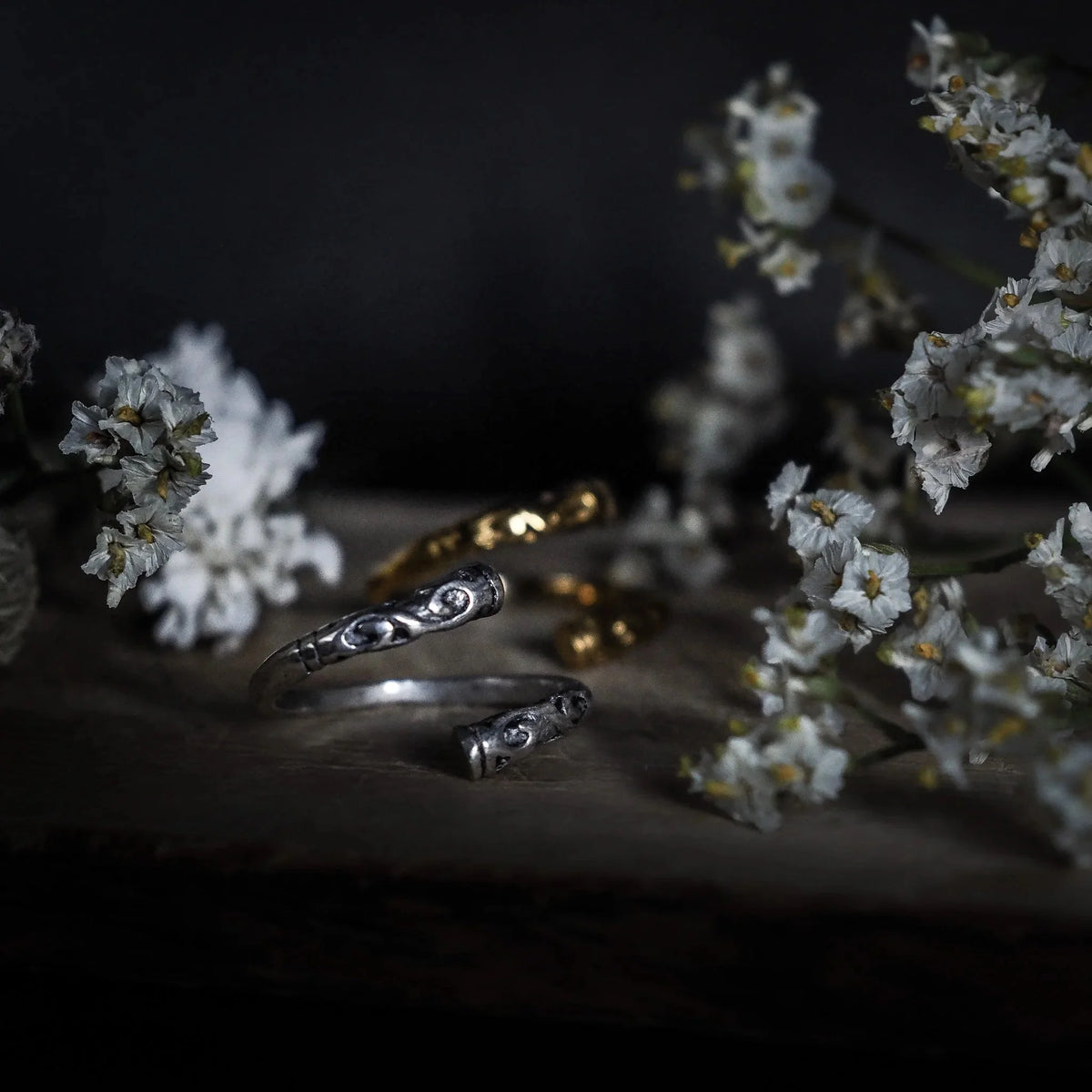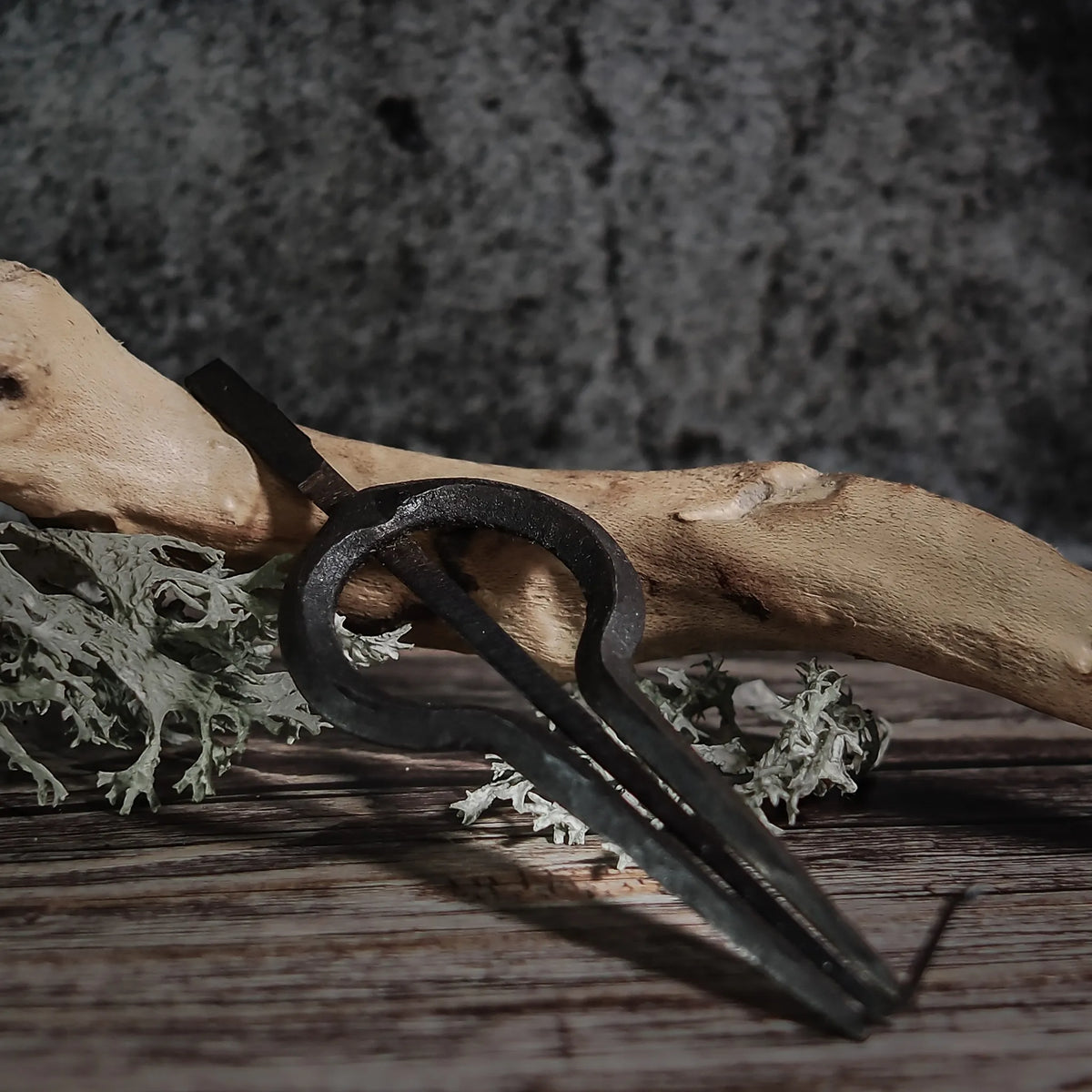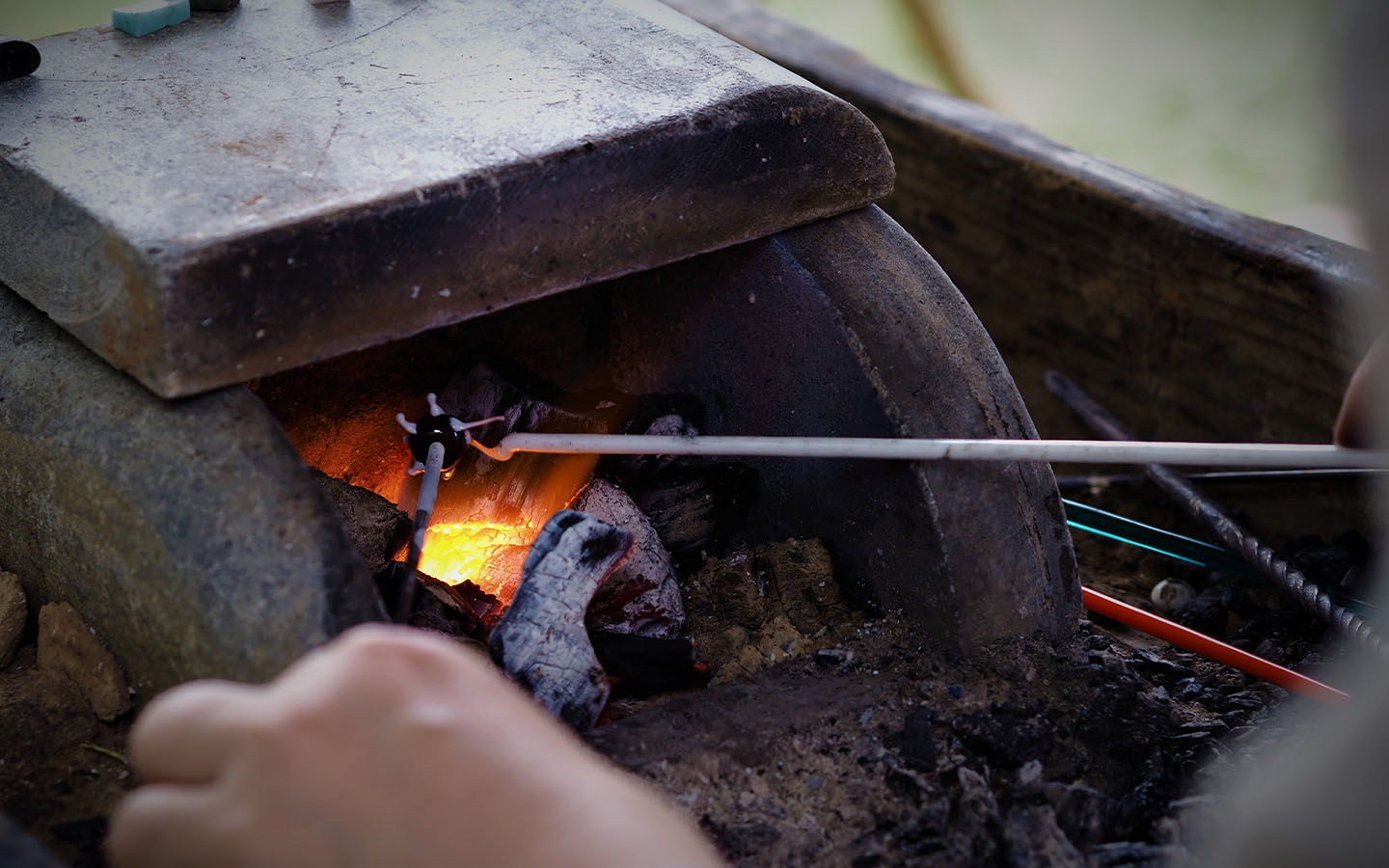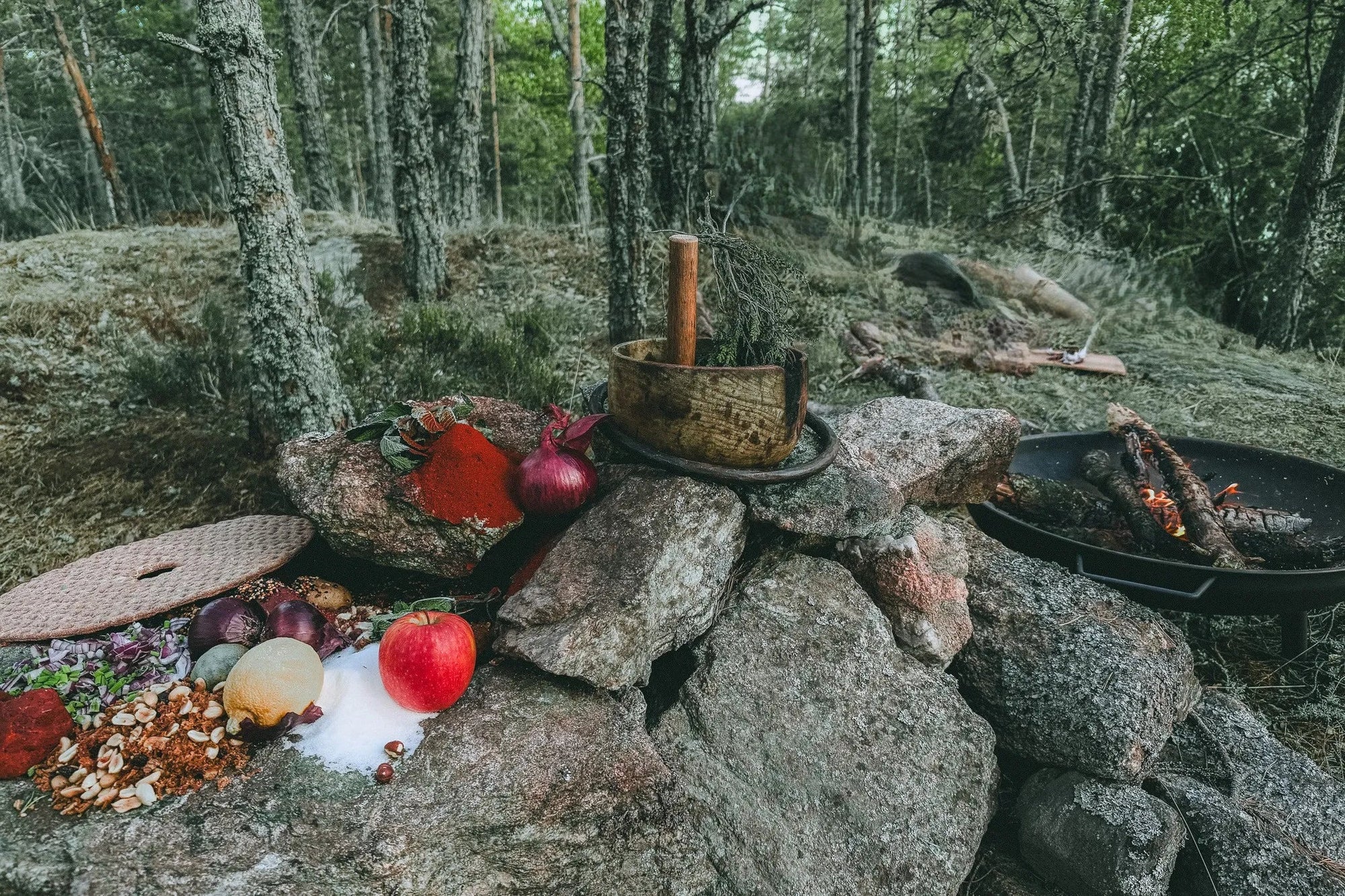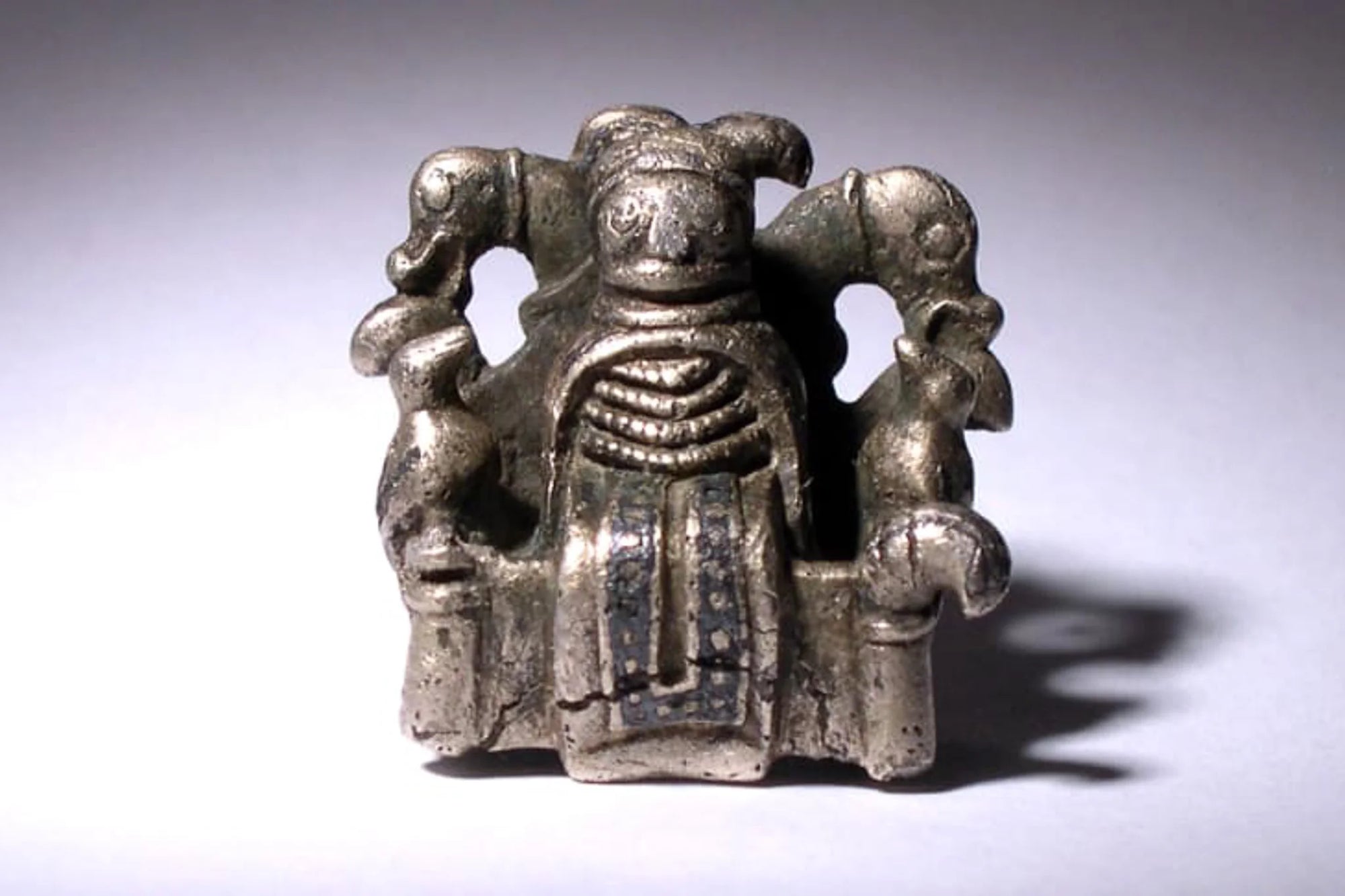Part 1 of 3.
Since time immemorial, man has wanted to adorn himself in various ways, whether it concerns body modifications or with fine garments and jewelry, the people of the Viking Age were no exception. In the first of two posts, we will dive into the historical production of glass beads.
The making of glass beads and the tools used have not changed too much in a thousand years, of course modern versions of them are used but the function has remained the same. The craftsman needs a small furnace and a bellows to achieve temperatures of over 1000 ℃. A "dorn" is a round metal rod around which the hot glass can be wrapped or pulled over, there are archaeological finds from Helgö of mandrels with handles. The findings made on mandrels often have a conical tip for easier removal of the finished glass.
Recycling and importation were the norm as the craftsmen of the Viking Age could not produce the glass themselves, but imported semi-finished products from the Christian kingdoms on the continent and the caliphate in today's Middle East. A common occurrence were blue "glass cakes" imported from Constantinople or Miklagård, as we northerners called the city. Also finished rods of mosaic and thousand flowers (thousand flowers) were imported and processed into pearls.

Mosaic patterns are created by fusing together large collections of glass and making a rod where the pattern is visible in cross-section. Two other methods are spinning the glass around a mandrel or blowing it up and pulling it over a bar. The glass can then either be cut into beads or reheated and then rolled over a mold that cuts out finished beads.

The Viking Age craftsmen did not make their own glass, but they still needed to have knowledge of how the substance reacts at different temperatures and with various other substances that can be added to the recipe. Broadly speaking, glass beads contain 3 main components; vitrifications like silica which comes from quartz and sand, flux such as soda or salt which can lower the melting point of the glass but makes it sensitive to moisture and finally stabilizing agents which are alkaline substances found in i.a. unrefined ash, which makes the glass more water resistant again.
Other substances that affect the glass are metals such as copper which can color the glass turquoise/green. Cobalt makes the glass blue and manganese goes more towards purple, if you mix the two later it goes towards violet. So even if the art of creating glass did not exist in the Nordics during the Viking Age, there was an enormous knowledge of how to manipulate the glass once it was in one's furnace!
Manufacturing took place in the first cities such as Hedeby in Germany, Ribe in Denmark, Kaupang in Norway and Birka in Sweden to name a few Viking Age production locations. In archeology, you often talk about central places in relation to the first cities, and the production of pearls is strongly linked to these, as it is not something we see in the smaller villages.
Excavations in Uppåkra have resulted in an exciting find where a pearl has been found that is similar to one that we at Nordlys Viking have set as found in Bodarp. Could it be that what we see are traces of exchange trade from Uppåkra, a larger central place within the region to Bodarp, a smaller settlement or is it a sort of continuation of styles and the finds in question are separated by several generations? Since the project in Uppåkra runs until 2026, it remains to be seen what concrete answers from archeology are concerned. Until then, it's free to speculate, what do you think might have happened here?

Source of image from Mats: photo taken by Maria Jensen at the History Museum, Lund University. www.uppakra.lu.se
Pearls in museums are often dull in color but this does not necessarily mean that they were dull during their working life, the time that pearls spent underground is one of the reasons for the dull finish seen on the pearl from Uppåkra. In other cases, the pearl may have had a matte finish during its lifetime, therefore we have chosen to produce models of historical pearls with a matte and glossy finish to represent both.
For those of you who want to read more and geek out, we strongly recommend Moa Råhlander's master's thesis: https://www.diva-portal.org/smash/record.jsf?pid=diva2%3A1468013&dswid=9339
Additional literature: Viking Dress Code by Kamil Rabiega https://nordlysviking.com/products/viking-dress-code (Maybe you have a hyperlink function that looks better)
Text by Robert Guildford





